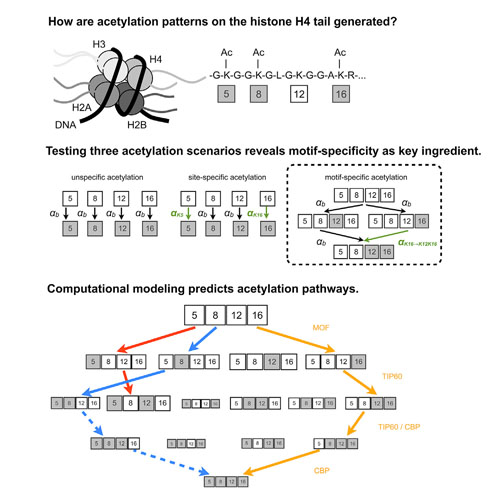Combinatorial Histone Acetylation Patterns Are Generated by Motif-Specific Reactions
27-Jan-2016
Cell Systems, Volume 2, Issue 1, p49–58, DOI: http://dx.doi.org/10.1016/j.cels.2016.01.002
Post-translational modifications (PTMs) are pivotal to cellular information processing, but how combinatorial PTM patterns (“motifs”) are set remains elusive. We develop a computational framework, which we provide as open source code, to investigate the design principles generating the combinatorial acetylation patterns on histone H4 in Drosophila melanogaster. We find that models assuming purely unspecific or lysine site-specific acetylation rates were insufficient to explain the experimentally determined motif abundances. Rather, these abundances were best described by an ensemble of models with acetylation rates that were specific to motifs. The model ensemble converged upon four acetylation pathways; we validated three of these using independent data from a systematic enzyme depletion study. Our findings suggest that histone acetylation patterns originate through specific pathways involving motif-specific acetylation activity.











